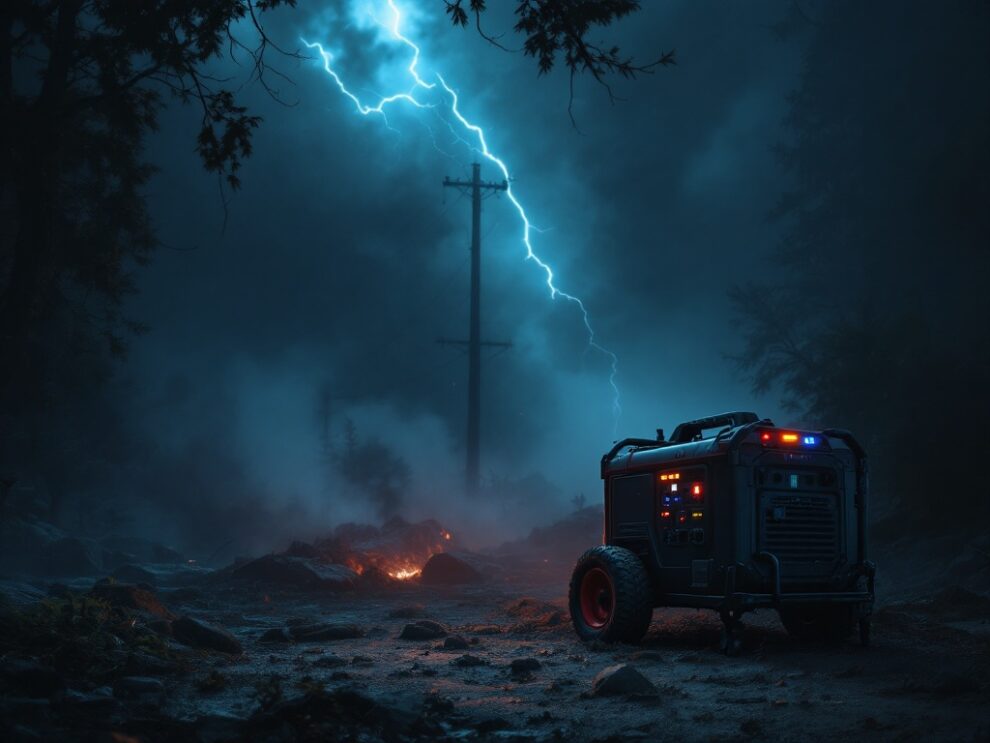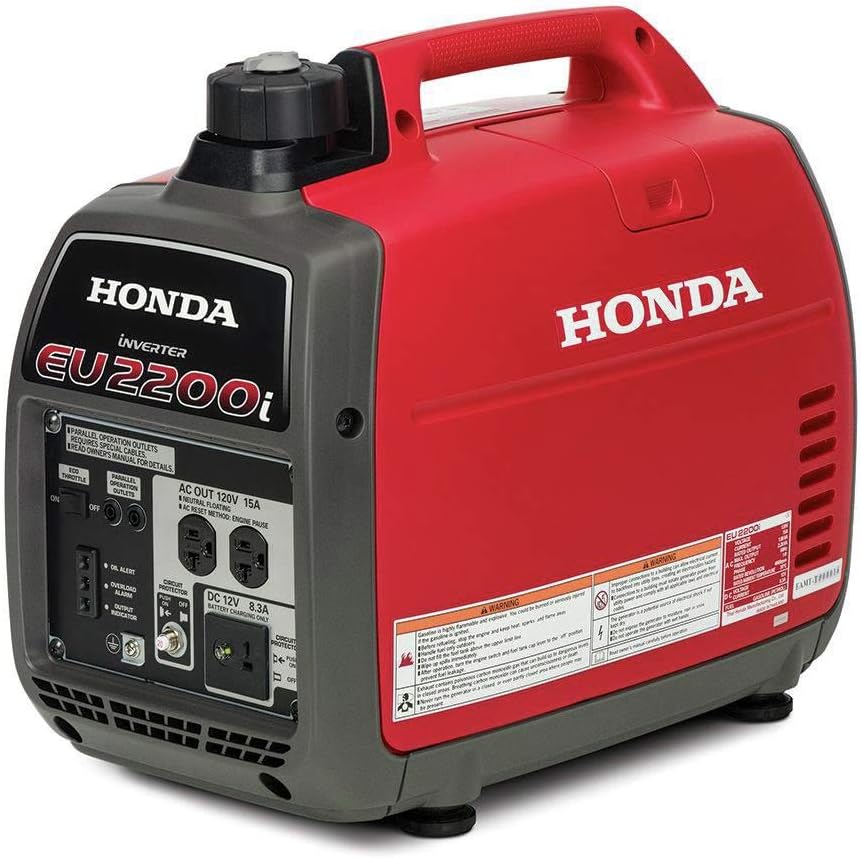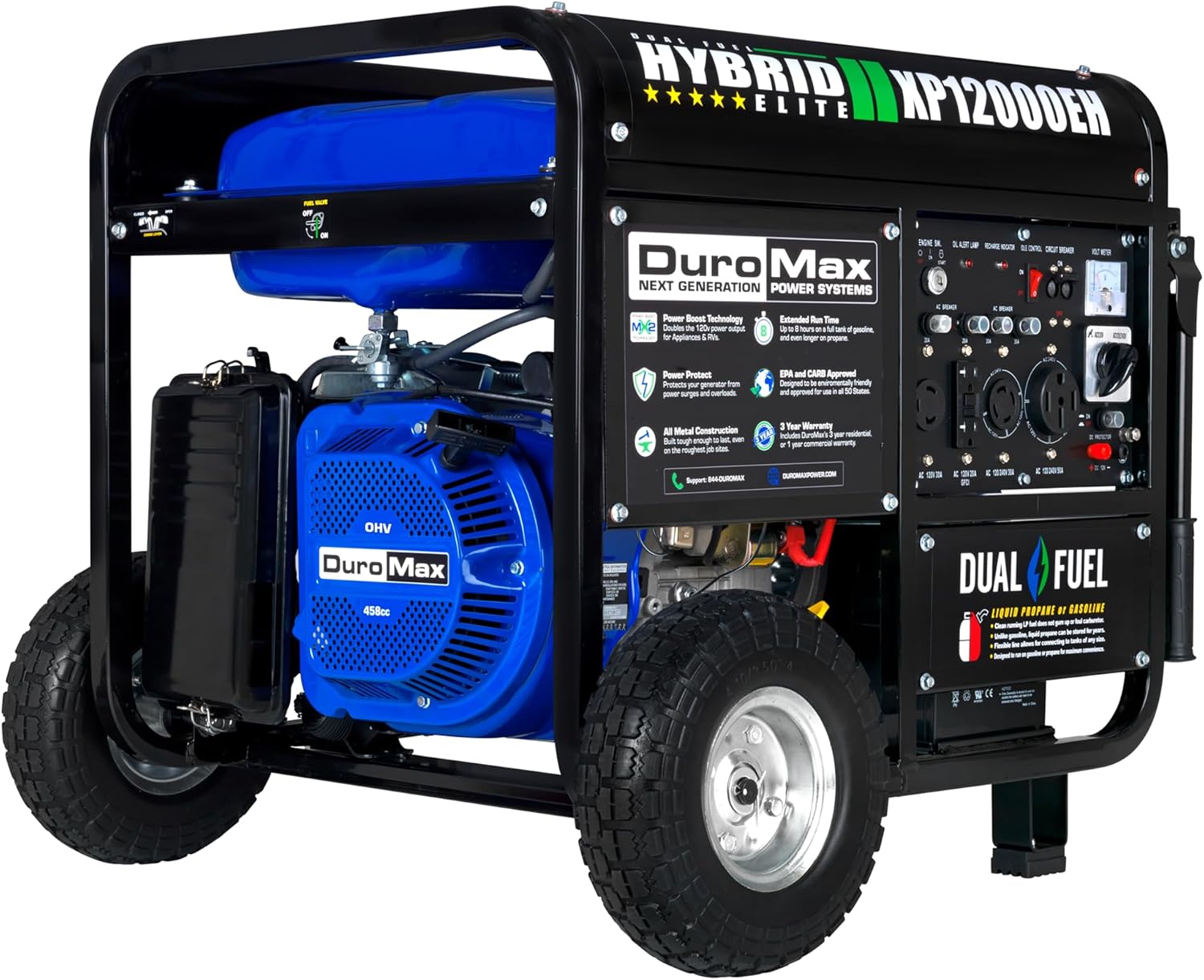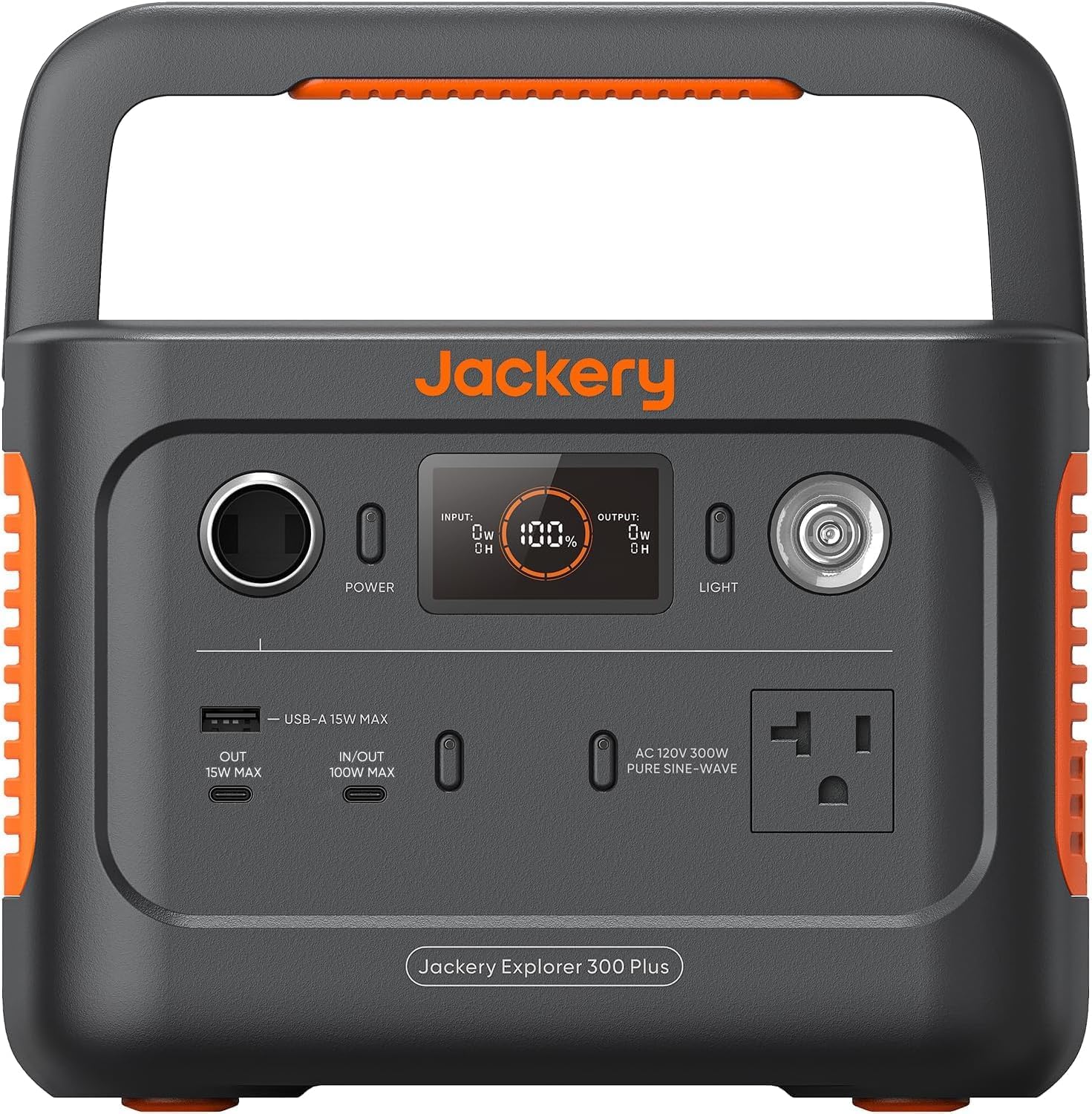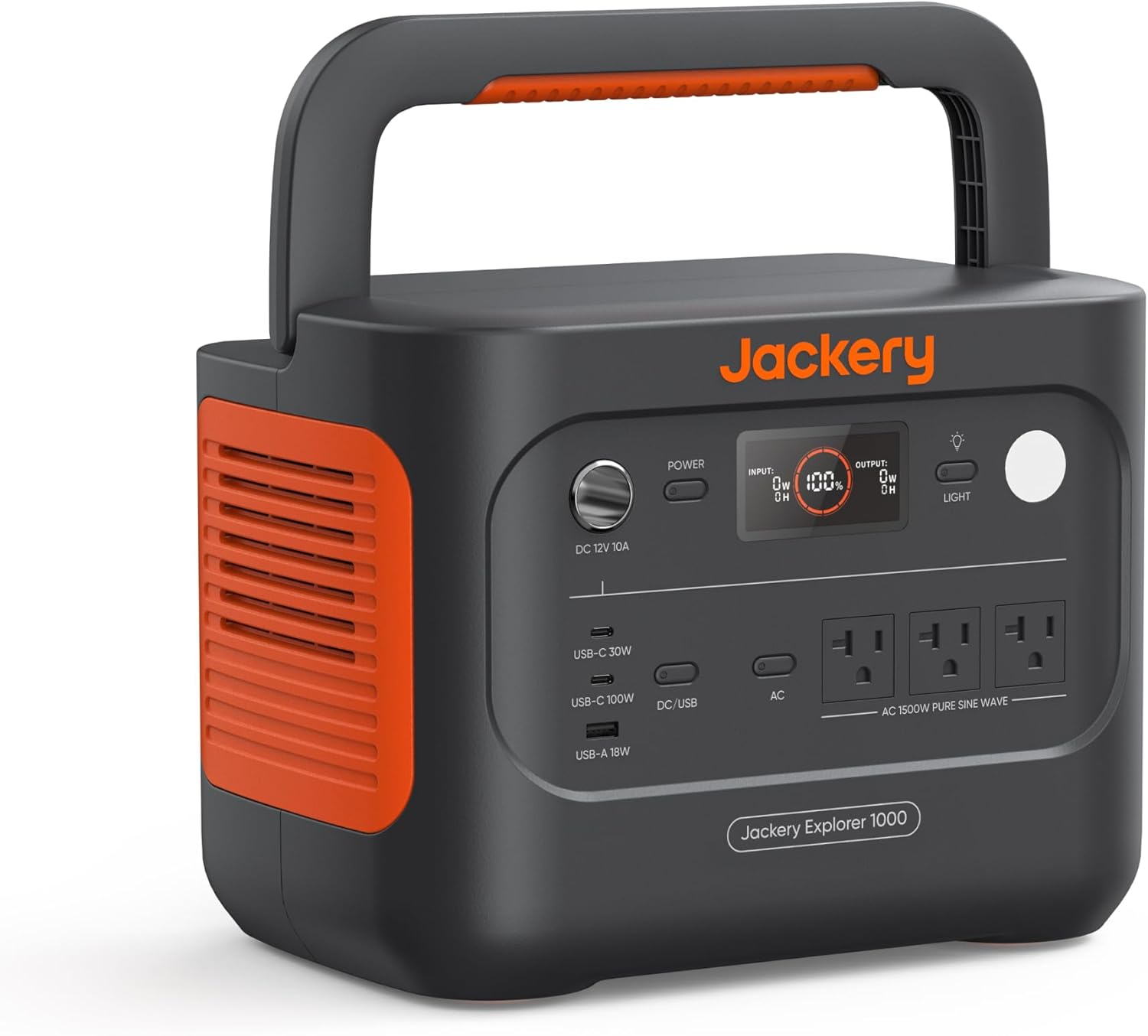As we navigate through 2025, power outages continue to rise in frequency due to increasingly severe weather events and aging infrastructure. A reliable portable generator has become an essential investment for emergency preparedness. This comprehensive analysis examines the top portable generators available today, focusing on capacity, fuel efficiency, reliability, and value. The latest models offer significant improvements in noise reduction, fuel efficiency, and smart features while maintaining the core functionality needed during power emergencies. Whether you’re preparing for natural disasters or simply want peace of mind, this guide will help you select the optimal portable generator to meet your emergency power needs.
Understanding Portable Generator Basics
Portable generators serve as mobile power sources that convert fuel into electricity, providing crucial energy when grid power becomes unavailable. These devices offer versatility and convenience, making them essential tools for emergency situations, outdoor activities, and job sites where reliable power is needed. A quality portable generator enables you to run critical appliances and devices during power outages, potentially preventing food spoilage, maintaining communication systems, and preserving comfort during challenging situations.
The fundamental operation of a portable generator involves an engine that powers a small turbine to generate electrical current. Most conventional models utilize gasoline, propane, or diesel as their primary fuel source, though newer alternatives like battery-based power stations have gained popularity in recent years. The mobility factor distinguishes portable generators from their stationary counterparts, with designs featuring wheels, handles, and relatively compact dimensions that facilitate transportation and storage.
When selecting a portable generator, understanding power ratings becomes crucial for matching your emergency needs. Generators typically list two power measurements: starting (surge) watts and running watts. Starting watts represent the maximum power output available for a short duration to handle the initial surge required when motors and compressors turn on, while running watts indicate the continuous power the generator can supply during normal operation1. Properly matching these ratings to your emergency requirements ensures your critical appliances and systems receive adequate power without overloading the generator.
Types of Portable Generators
The portable generator market in 2025 offers several distinct categories, each with unique advantages for emergency situations. Traditional portable generators represent the most established technology, typically providing higher power output at lower initial cost, though they generally produce more noise and may lack advanced features. These conventional models remain popular for basic emergency backup where maximum power at an economical price point takes priority over refinements.
Inverter generators have revolutionized the portable power market with their ability to produce “clean” electricity with stable sine waves suitable for sensitive electronics. These sophisticated units adjust engine speed based on load demand, resulting in quieter operation, improved fuel efficiency, and power that safely operates computers, smartphones, and medical devices. Though typically more expensive per watt of output, inverter generators have become increasingly popular for emergency use due to their reliability, efficiency, and ability to safely power modern technology.
Dual-fuel generators offer versatility by operating on either gasoline or propane, providing strategic advantages during emergencies when fuel availability may become unpredictable. The ability to switch between fuel sources extends runtime options and creates flexibility during extended power outages. Models like the Champion 4,750-Watt Dual-Fuel Portable Generator exemplify this adaptability, allowing users to utilize propane from home systems or 20-pound tanks commonly used for grills when gasoline becomes scarce or difficult to store.
Solar generators and battery power stations represent the newest category, offering emission-free operation through rechargeable battery systems that can be replenished via solar panels, wall outlets, or even vehicle connections. While typically offering lower maximum output than fuel-powered alternatives, these systems provide silent operation, indoor safety, and freedom from fuel concerns. Models like the EcoFlow Delta Pro and Jackery Explorer 1000 demonstrate how this technology has matured into viable emergency power options for running essential electronics and small appliances.
Key Factors to Consider When Choosing an Emergency Generator
The primary consideration when selecting an emergency generator involves accurately calculating your power requirements. To properly size a generator, you should list all essential appliances and devices you’ll need during an outage, noting both their running watts and starting watts. Critical home systems like refrigerators, sump pumps, heating systems, and medical devices should take priority, followed by comfort and communication tools. Selecting a generator with capacity that exceeds your total requirements by 20% provides a safety margin for unexpected needs and prevents dangerous overloading during emergency situations.
Fuel type and efficiency significantly impact a generator’s practicality during extended emergencies. Gasoline provides high energy density but deteriorates during storage and may become difficult to obtain during widespread outages. Propane stores indefinitely and burns cleaner but delivers slightly less power per volume. Dual-fuel models like the Champion 4,750-Watt offer valuable flexibility, while inverter technology in models like the Honda EU3200i maximizes runtime through intelligent load matching. When evaluating options, consider both the tank capacity and the runtime at quarter load, as this indicates how long you can power essential systems between refueling sessions.
Noise levels become particularly important in residential settings and during nighttime operation in emergencies. Traditional generators typically produce between 65-75 decibels at operating distance, roughly equivalent to a vacuum cleaner or busy traffic. Inverter generators significantly improve this aspect, with premium models like the Honda EU3200i operating at just 48-57 decibels – comparable to normal conversation. The Predator 9500-Watt balances substantial power output with relatively manageable noise levels around 64-68 decibels, demonstrating how newer designs prioritize noise reduction even in higher-capacity units.
Portability features become crucial when you need to move, store, or transport your generator. Weight ranges significantly between models, from compact inverters like the Champion 2500-Watt weighing just 39 pounds to powerful units like the Predator 9500-Watt at 257 pounds. Manufacturers have recognized this challenge by incorporating foldable handles, rugged wheels, and balanced designs to improve maneuverability. When assessing portability, consider not just the weight but also the quality of handles, wheel design, and whether you’ll primarily keep the generator in place or need to frequently relocate it during use.
Top Portable Generators for Emergency Power in 2025
Best Overall Generators
The Honda EU2200i Companion continues to dominate the portable generator market as the best overall choice for emergency preparedness in 2025. This inverter generator delivers 2,200 starting watts and 1,800 running watts of exceptionally clean power, making it safe for sensitive electronics while providing sufficient capacity for essential emergency circuits. Its remarkably quiet operation at just 48-57 decibels ensures it won’t become a neighborhood nuisance during extended outages, while the durable construction and legendary Honda reliability provide peace of mind when power is critical.
The Generac iQ3500 establishes itself as another excellent all-around emergency generator, earning particular recognition for its rugged construction and user-friendly design. With 3,500 starting watts and 3,000 running watts, this inverter generator offers sufficient capacity to power refrigerators, lights, communication devices, and other critical home systems during outages. The metal enclosure with sturdy handles enhances durability and mobility, while the convenient push-button electric start eliminates struggle with pull cords during stressful emergency situations. The intuitive LCD screen provides vital operating data including fuel level, remaining runtime, and power output, eliminating guesswork during critical situations.
For those seeking maximum versatility, the Champion 4,750-Watt Dual-Fuel Portable Generator delivers exceptional flexibility for emergency situations. The ability to operate on either gasoline or propane expands fuel options during disasters when supply chains may be disrupted. With 4,750 starting watts and 3,800 running watts, this generator can simultaneously power numerous critical home circuits including refrigeration, lighting, and communication systems. The dedicated RV receptacle adds additional utility for those evacuating with recreation vehicles, while the relatively reasonable 119-pound weight balances substantial power with manageable portability.
High-Capacity Emergency Generators
The Predator 9,500-Watt Inverter Portable Generator represents an impressive advancement in high-capacity portable power, combining substantial output with the clean power advantages of inverter technology. This powerhouse delivers 9,500 starting watts and 7,600 running watts—sufficient capacity to maintain most critical circuits in a modest home simultaneously during extended outages. Despite its considerable 257-pound weight, thoughtfully designed folding handles and durable rubber wheels facilitate mobility, allowing one person to position the unit as needed. The comprehensive safety features include carbon monoxide detection that automatically shuts down if dangerous conditions develop, addressing a critical concern for emergency operation.
The DuroMax XP12000EH stands out as a formidable emergency power solution with its massive 12,000 starting watts and 9,500 running watts capacity. This dual-fuel behemoth can operate on either gasoline or propane, providing crucial flexibility during extended emergencies when fuel availability becomes unpredictable. The unit comes equipped with an electric starter for reliable ignition and features a diverse array of outlets including a 50-amp RV receptacle ideal for powering larger emergency shelter options. Though weighing nearly 250 pounds, the integrated wheels and handle system make it manageable to position with reasonable effort, striking a balance between substantial power capacity and practical mobility.
For those requiring extended runtime during emergencies, these high-capacity generators deliver impressive performance metrics. The Predator 9,500-Watt can operate for up to 18.5 hours at quarter load on its substantial 6.8-gallon fuel tank, while the DuroMax’s 8.3-gallon capacity similarly enables prolonged operation between refueling intervals. These capabilities prove particularly valuable during extended outages following severe weather events or infrastructure failures, when power restoration may take days rather than hours. The additional capacity allows these generators to simultaneously power essential systems like refrigeration, well pumps, heating systems, and communication equipment without requiring constant load management.
Compact and Budget-Friendly Options
The Champion 2500-Watt Inverter Generator emerges as an excellent compact solution for those with modest emergency power needs and limited storage space. Weighing just 39 pounds, this highly portable unit delivers clean power suitable for running small appliances, charging devices, and powering essential lighting during outages. Its impressive fuel efficiency provides up to 11 hours of runtime on a quarter load with its modest 1.1-gallon tank, while the exceptionally quiet 53-decibel operation remains unobtrusive during stressful emergency situations. The parallel connection capability allows users to link two units for increased capacity when needed, providing a scalable approach to emergency preparedness.
For those primarily concerned with powering electronic devices and small appliances during emergencies, the Jackery Explorer 300 provides a compact and affordable solution. This battery-based power station eliminates fuel concerns entirely, operating silently with zero emissions while delivering sufficient power for charging phones, tablets, laptops, and running small medical devices. The unit’s straightforward interface and maintenance-free operation make it particularly suitable for those seeking simplicity, while its indoor-safe design allows placement exactly where power is needed most during emergencies. Though limited in maximum capacity compared to fuel-powered alternatives, its reliability and convenience make it a valuable addition to emergency preparations.
The Jackery Explorer 1000 represents a more substantial battery-based emergency power option, offering greater capacity while maintaining reasonable portability at roughly the size and weight of a small microwave. This power station provides multiple outlet options to run various devices simultaneously, from medical equipment to communication tools and essential lighting. The absence of exhaust and noise makes it suitable for indoor use during emergencies, eliminating concerns about ventilation and enabling placement directly in living spaces where power is needed. For those with primarily electronic power needs during outages, this solution offers simplicity and reliability without the maintenance and fuel storage requirements of conventional generators.
Safe Operation and Maintenance for Emergency Generators
Safety Considerations
Operating portable generators safely during emergencies requires strict adherence to several critical guidelines to prevent carbon monoxide poisoning, electrical hazards, and fire risks. Generators must always be positioned outdoors, at least 20 feet from doors, windows, and vents, with exhaust directed away from the building to prevent deadly carbon monoxide from entering living spaces. Modern models like the Predator 9500-Watt feature carbon monoxide detection systems that automatically shut down the engine if dangerous conditions develop, providing an additional safety layer during stressful emergency situations when proper placement might be overlooked.
Electrical safety demands equal attention during emergency generator operation. All connections should utilize properly rated extension cords designed for outdoor use, and generators should never be connected directly to home wiring without a professionally installed transfer switch or interlock device. Overloading presents another significant risk, as exceeding a generator’s capacity can damage both the unit and connected appliances while potentially creating fire hazards. Starting with essential equipment and gradually adding loads while monitoring the generator’s performance helps prevent dangerous overloading situations during critical emergency operations.
Proper fuel handling and storage constitute another crucial aspect of generator safety. Gasoline should be stored in approved containers away from living spaces, preferably in detached structures, and used within a few months unless treated with stabilizer. Refueling must always occur after shutting down the generator and allowing it to cool completely, as spilling fuel on hot engine components presents an immediate fire hazard. For those using propane models, regular inspection of tanks, regulators, and connection hoses helps identify potential leak points before they create dangerous situations during emergency deployment.
Maintenance Best Practices
Regular maintenance ensures your generator will function reliably when emergency situations arise, beginning with routine inspection and testing even when outages aren’t imminent. Experts recommend starting your generator monthly and running it under load for 20-30 minutes to circulate oil, charge the battery if equipped, and identify any developing issues before they become critical failures. This regular exercise keeps seals lubricated, prevents fuel system problems, and provides confidence that the system will perform when needed most during actual emergencies.
The engine oil represents a critical maintenance point on all fuel-powered generators, requiring regular checks and changes according to the manufacturer’s schedule or operating hours. Most portable generators feature low-oil shutdown protection to prevent engine damage, but proactive maintenance prevents the frustration of having your generator refuse to start or suddenly shut down during an emergency. Quality generators like those from Honda, Champion, and Predator include clear maintenance schedules in their documentation, typically recommending oil changes every 50-100 operating hours or at least annually, regardless of limited use.
Air filters, spark plugs, and fuel systems require seasonal attention to ensure reliable emergency operation. Air filters should be inspected before each use during emergency situations and cleaned or replaced when visibly dirty, as restricted airflow reduces performance and may prevent starting. Spark plugs typically require replacement annually or after 100 operating hours, while fuel systems benefit from stabilizer addition when stored for extended periods. For models with batteries, maintaining proper charge through regular use or float chargers prevents the frustration of failed electric starting when emergencies occur.
Conclusion: Making the Right Choice for Emergency Preparedness
Selecting the optimal portable generator for emergency power requires balancing several factors against your specific needs and circumstances. Your power requirements represent the fundamental starting point, determining the minimum generator capacity necessary to operate critical systems during outages. The Predator 9,500-Watt and DuroMax XP12000EH offer substantial capacity for comprehensive home backup, while models like the Honda EU2200i and Champion 2500-Watt provide excellent solutions for more modest emergency needs. Consider not just your immediate requirements but also potential future needs as dependency on electrical devices continues to increase.
Budget considerations inevitably influence generator selection, but emergency preparedness represents an area where quality and reliability should take precedence when possible. Higher-quality generators typically offer more consistent performance, better fuel efficiency, longer lifespan, and superior support when issues arise. While premium options like Honda models command higher prices, they deliver exceptional reliability and longevity that may justify the investment for critical emergency preparedness. Alternatively, manufacturers like Champion and Predator have established strong reputations for delivering solid performance at more moderate price points, providing excellent value for emergency preparation.
Ultimately, the best portable generator for your emergency needs balances power capacity, fuel options, runtime, noise levels, and portability with your specific circumstances. Those in areas prone to extended power outages might prioritize dual-fuel capability and larger fuel tanks, while those facing frequent but shorter disruptions might emphasize quiet operation and clean power for electronics. By thoughtfully assessing your emergency power requirements and matching them to the capabilities of today’s leading generators, you can develop a reliable backup power strategy that provides peace of mind when the inevitable outages occur. Remember that the ideal time to purchase a generator is well before you need one—when you can make a deliberate choice rather than accepting whatever remains available during an actual emergency.
Table Summary
Here’s a table summarizing the key features of the portable generators mentioned in the guide:
| Generator Model | Starting Watts | Running Watts | Fuel Type | Weight (lbs) | Noise Level (dB) | Runtime at Quarter Load |
|---|---|---|---|---|---|---|
| Honda EU2200i | 2,200 | 1,800 | Gasoline | 46.5 | 48-57 | Up to 8.1 hours |
| Generac iQ3500 | 3,500 | 3,000 | Gasoline | 129 | Not specified | Up to 14 hours |
| Champion 4,750-Watt Dual-Fuel | 4,750 | 3,800 | Gasoline/Propane | 119 | Not specified | Up to 22.5 hours (propane) |
| Predator 9,500-Watt Inverter | 9,500 | 7,600 | Gasoline | 257 | 64-68 | Up to 18.5 hours |
| DuroMax XP12000EH | 12,000 | 9,500 | Gasoline/Propane | 248 | Not specified | Up to 20 hours (gasoline) |
| Champion 2500-Watt Inverter | 2,500 | 1,850 | Gasoline | 39 | 53 | Up to 11.5 hours |
| Jackery Explorer 300 | 300 | 300 | Battery (Solar/USB) | 7.1 | Silent | Varies by battery capacity |
| Jackery Explorer 1000 | 1,000 | 1,000 | Battery (Solar/USB) | 22 | Silent | Varies by battery capacity |
Note:
- Runtime at quarter load is an estimate and may vary based on actual usage patterns.
- Noise levels and runtime can differ slightly based on specific operating conditions.
- Battery-based systems like Jackery Explorers have variable runtime based on the battery’s capacity and charging method.
This table provides a quick comparison of key features to help you choose the best generator for your emergency power needs.
